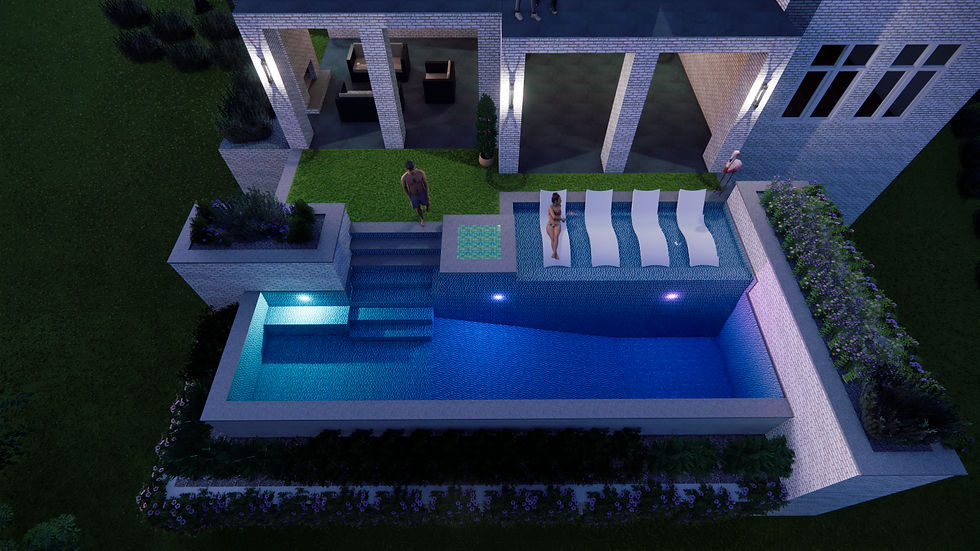Understanding Pool Finishes: Comparing Plaster, Pebble, and Tile Options
- Cosmic Design Studio

- May 8
- 2 min read
When building or renovating a swimming pool, one of the most important decisions you'll make is selecting the interior finish. Your choice affects everything from aesthetics to maintenance requirements and lifespan. Let's explore the three main options—plaster, pebble, and tile—to help you make an informed decision.

Traditional Plaster
Plaster has been the standard swimming pool interior finish for decades, and for good reason.
Advantages:
Most affordable initial investment
Smooth, comfortable surface for swimmers
Classic appearance that creates traditional blue water color
Can be tinted in various colors (though white remains most common)
Relatively straightforward installation process
Considerations:
Typically lasts 7-10 years before requiring resurfacing
More susceptible to staining and etching from chemical imbalances
Can develop rough spots over time as it wears
May show surface crazing (tiny cracks) as it ages
Plaster remains popular for homeowners working within a specific budget or those who plan to renovate again within a decade. The initial cost typically ranges from $4-$7 per square foot, making it significantly less expensive than other options.

Aggregate/Pebble Finishes
Aggregate finishes like PebbleTec, StoneScapes, and Diamond Brite have gained tremendous popularity in recent years, offering a middle ground between plaster and tile.
Advantages:
Greater durability (10-20 year lifespan)
Better stain resistance than plaster
Wide range of color options and appearances
Textured surface provides better traction
Less susceptible to chemical etching
Considerations:
Higher cost than plaster ($10-$15 per square foot)
Slightly rougher texture (varies by product)
Professional application is critical for consistent results
Some types may feel rough on sensitive feet
These finishes combine cement with small quartz, pebble, or glass beads to create a more durable surface. The textured finish not only looks distinctive but also provides better slip resistance than smooth plaster.

Premium Tile Finishes
Tile represents the luxury end of pool finishes, offering unmatched durability and endless design possibilities.
Advantages:
Exceptional longevity (20+ years)
Superior stain resistance
Virtually unlimited color and pattern options
Smooth, non-porous surface that's easy to clean
Can incorporate custom designs and mosaics
Considerations:
Highest upfront cost ($30-$50+ per square foot)
Installation is more time-consuming and labor-intensive
Requires skilled installers with specific expertise
Some glass tiles may be slippery when wet
Pool tile comes in various materials including porcelain, ceramic, glass, and stone. While the initial investment is significant, many homeowners find the long-term value and aesthetic qualities worth the premium price.
Making Your Decision
When selecting a pool finish, consider these factors:
Budget: Both initial cost and long-term value
Aesthetic preferences: Color, texture, and overall look
Planned ownership timeline: How long before you might sell or renovate
Maintenance commitment: How much time you want to spend on upkeep
Water chemistry management: Some finishes are more forgiving than others
Many pool owners find that aggregate finishes offer the best balance of durability, appearance, and value. However, each situation is unique, and what works best for your pool depends on your specific priorities.
Remember that proper water chemistry maintenance is crucial for maximizing the lifespan of any finish. Even the most premium finish will deteriorate prematurely if water balance isn't maintained consistently.
Planning a new pool or renovation? Contact our team for samples and a personalized consultation on which finish best suits your specific needs and preferences.



Comments